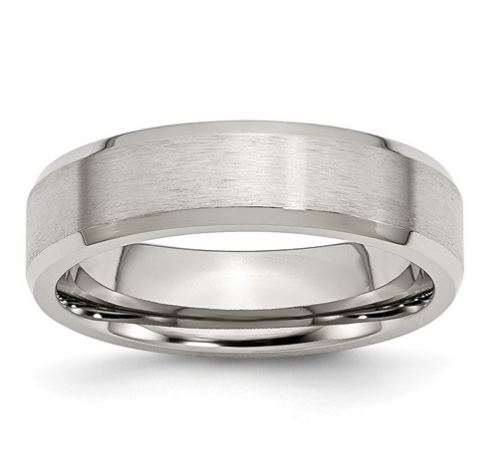If you’ve been through the process of picking out or creating an engagement ring, you know that there are a lot of design options to choose from when it comes to jewelry. One of the biggest things you’ll have to figure out is what metal you’d like your ring to be made of. For women, this choice is often the easiest, as most women tend to go with the same metal as their engagement ring.
For men, the choice of metal is often a bit more complicated. While some men prefer the prestige and significance that comes with wearing one of the precious metals (platinum, white gold, yellow gold, or rose gold), others choose to go with one of the cheaper, contemporary metals (stainless steel, titanium, or tungsten). Here are the important things to keep in mind when deciding which metal is the right fit for you.
Platinum: If you’re looking for a durable setting that will offer the best protection for your gemstones, platinum is the metal for you. It’s also 60% heavier than gold, so if you’re someone who likes the feeling of a heavier ring, you’ll love platinum.
- Pros: Durable, hypoallergenic, won’t lose metal when scratched, will hold value over time, doesn’t need rhodium plating, can be easily sized
- Cons: Most expensive jewelry metal
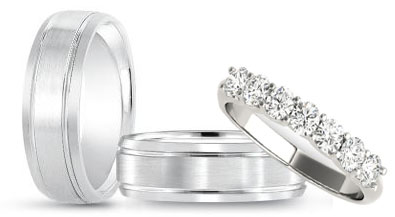
Platinum Wedding Bands
Gold: The classic choice for wedding bands, gold jewelry can be created in white, yellow, or rose colors. While yellow and rose gold don’t require too much maintenance, white gold does need to be re-plated in rhodium every year or two depending on how you care for it. Overtime, the rhodium plating found on white gold jewelry wears off and causes the ring to take on a yellow appearance.
- Pros: Less expensive than platinum, will hold value over time, can be easily sized
- Cons: Needs to be rhodium plated occasionally (white gold), loses a bit of metal every time it’s scratched, can bend out of shape since it’s one of the softer metals
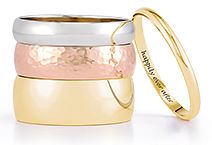
Gold Wedding Bands
Stainless Steel: Due to its low cost and durability, stainless steel has become a popular choice among men for their wedding bands. Not only can these wedding bands stand up to every day wear, they’re also really affordable. Just know that these rings cannot be resized, so if your finger ever changes sizes, you’ll have to order a new ring.
- Pros: Inexpensive, hypoallergenic, durable
- Cons: Cannot be resized, will not hold value over time
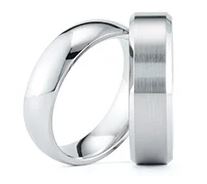
Stainless Steel Wedding Bands
Titanium: Similar to stainless steel, titanium is a good option for someone looking for a durable, low-cost wedding band. The main differences between stainless steel and titanium are that titanium rings are harder, darker in color, and a bit lighter in weight compared to stainless steel.
- Pros: Inexpensive, hypoallergenic, durable
- Cons: Cannot be resized, will not hold value over time
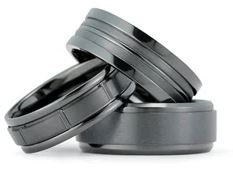
Titanium Wedding Bands
Tungsten: Tungsten is the hardest and most scratch resistant metal available. It’s also brittle, meaning if you accidentally drop a tungsten ring or knock it on a hard surface, it can break. Compared to stainless steel and titanium, tungsten bands have a heavier feel to them and are a bit more expensive.
- Pros: Relatively inexpensive (compared to platinum and gold), hypoallergenic, durable, high scratch resistance
- Cons: Cannot be resized, will not hold value over time, can break if enough pressure is applied
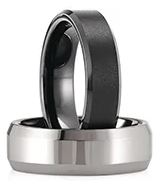
Tungsten Wedding Bands
It’s also important to note that precious metals like platinum and gold are easier for jewelers to work with, so you’ll find a lot more design options in platinum and gold compared to the three contemporary metals listed above. If you’re interested in a custom-made wedding band with a specific design you’d like incorporated, we’d recommend going with either a platinum or gold ring.
Hopefully after reading this, you’ll have a better idea of the type of metal that’s best for you. If you have any questions regarding wedding bands or would like to schedule a time to come in and look at different rings, contact us at 414-276-2457 or info@kloiberjewelers.com.


